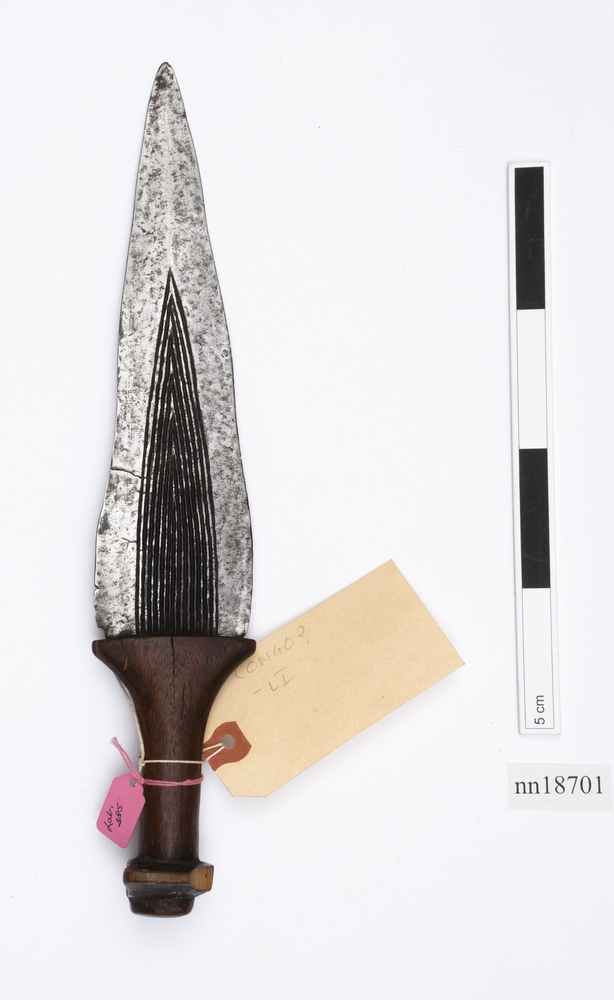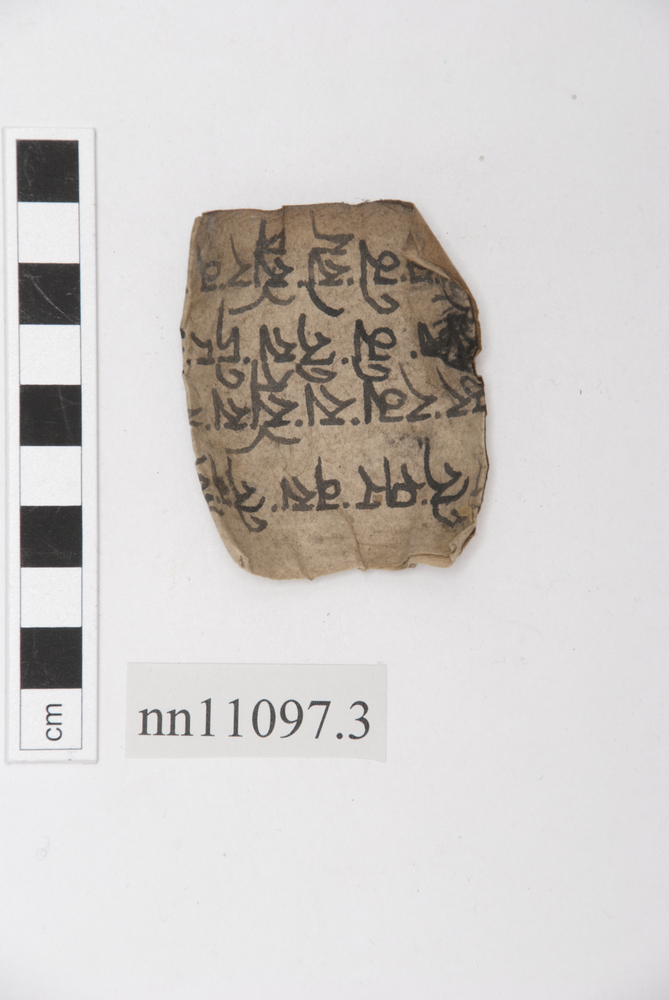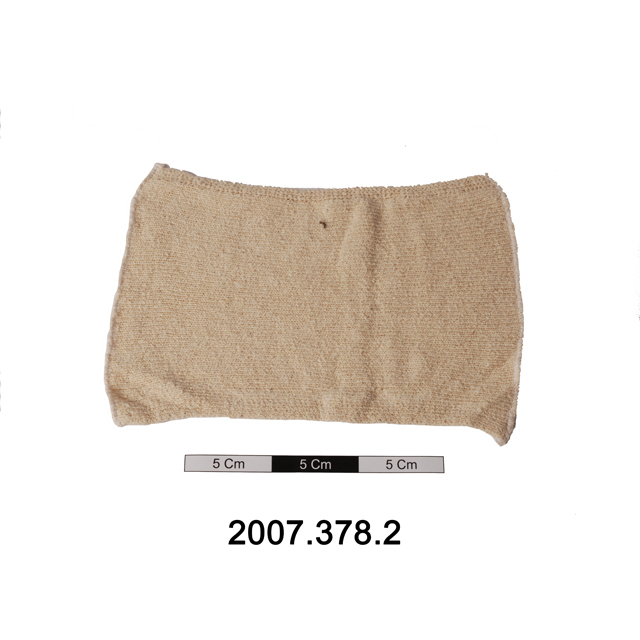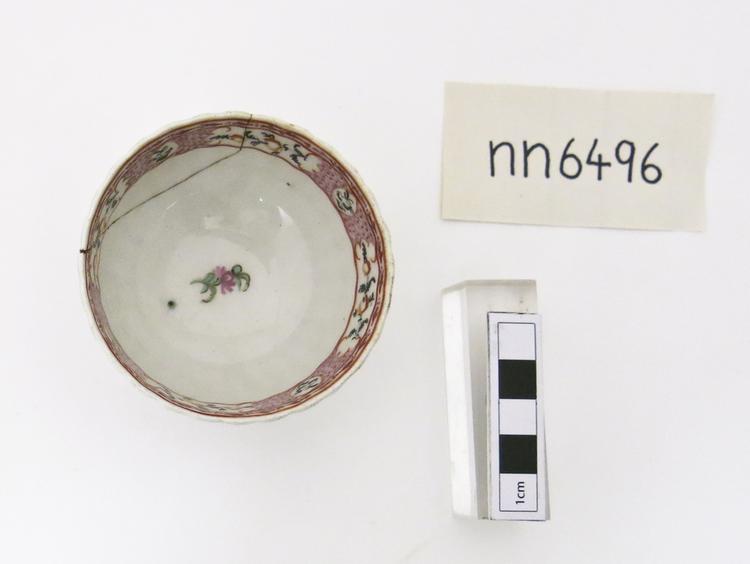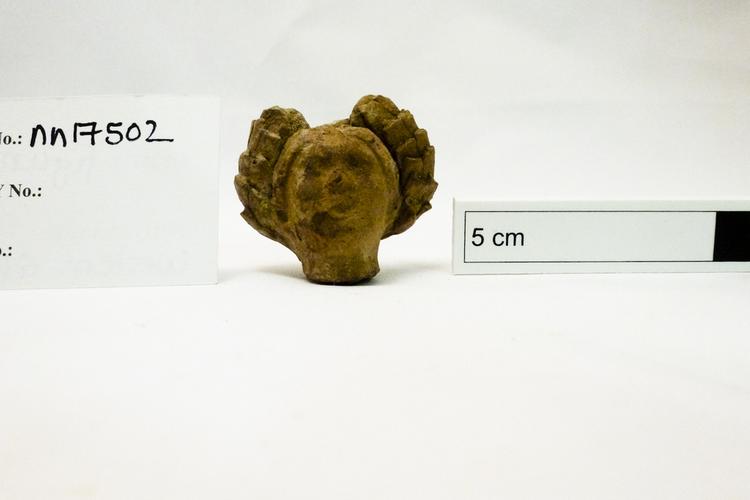
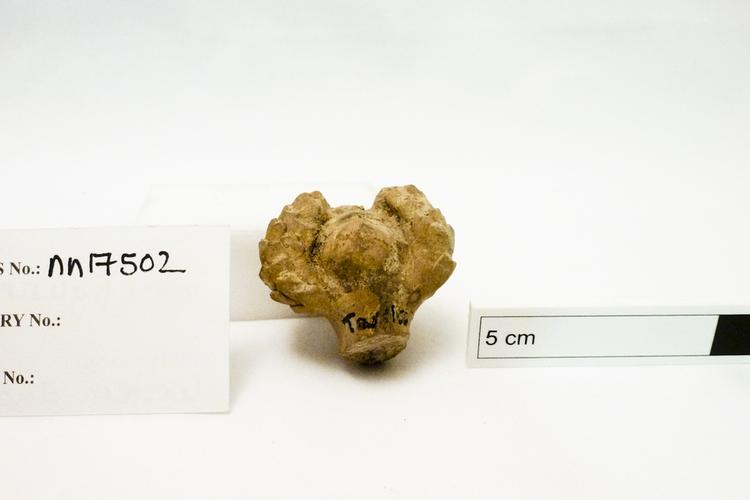
Terracotta head with a wreath around the head.
Head from a well modelled human female figurine with an elaborate wreath-like appliqué head decoration surrounding the face, but now lost in the middle area of it above the brow. The hair appears to be in a plain combed back coiffure, parted down the middle. The face is naturalistic and clearly modelled, though now much abraded and damaged. This figure is clearly of Hellenistic type and it is dramatically different to the highly stylized Sar Dheri female figures. Just who this particular figure represents is most unclear, however, though it in its deity-like adornment and dignity it may represent some form of goddess or other and so may need to be seen as another form of votive figure. Marked on the back in black ink with ‘Taxila’, the great ancient city complex near Islamabad in northern Pakistan. There is no indication, however, of which major area of Taxila this piece may have come from (Hathial, Bhir Mound, Sirkap or Sirsukh). There are a profusion of ancient sites, stupas, monasteries and temples in the Taxial Valley and this head could have been found almost anywhere. Early Historic Period, probably 1st century BCE. Archaeological context: presumably unstratified and from a surface collection. Given by Col. D H Gordon (1952/3).



